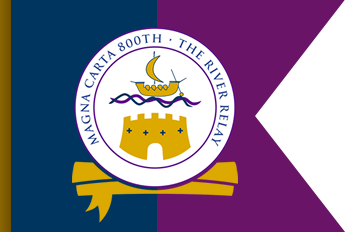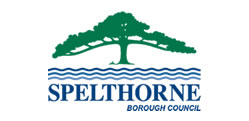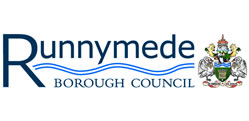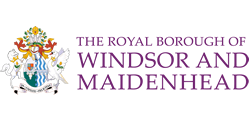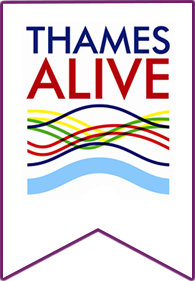Magna Carta 800th The River Relay
History
The Barons Establish British Values
In 1215 King John sealed the Magna Carta at Runnymede/Ankerwycke by the River Thames on 15th June. The Magna Carta is now acknowledged as one of the most important documents in our history. As Dan Jones writes, it is ‘admired as a foundation in the western traditions of liberty, democracy and the rule of law’.
This happened because of the so called ‘Golden Clauses’ 39 and 40:
‘No free man is to be arrested or imprisoned or disseized, or outlawed or exiled, or in any other way ruined, nor will we go against him, except by the legal judgement of his peers or by the law of the land.'
'To no one will we sell, to no one will we deny or delay, right or justice.’
However Magna Carta was sealed by a very reluctant King. It was a peace treaty in a civil war between the King and his Barons. John had become King following the death of his older brother Richard in 1199. He did not enjoy Richard’s reputation as a soldier and he was not the only heir as his nephew Arthur had a strong claim. Arthur was subsequently murdered, possibly by John himself. John alienated many people by his rule; he lost Normandy and lands in France; he imposed a very harsh taxation system and he was vicious to his enemies. He quarrelled with the church over who should be Archbishop of Canterbury, which led to the Pope Innocent 111 imposing an Interdict upon England thereby closing the churches, when John refused to accept the papal compromise candidate, Stephen Langton, as Archbishop.
Among the Barons who met King John at Runnymede, were the leading landowners who had become increasing frustrated by the King and were determined to see their grievances righted and the King’s power limited. The barons included Robert Montfichet, the youngest, who also outlived all the others and who was the lord of the lands around Runnymede. The barons had previously convened at St Alban’s in 1213 and Bury St Edmunds in 1214 where they had sworn an oath not to separate until the King had agreed to their demands.
King John died in 1216 to be succeeded by his young son Henry 111, whose regent William the Marshal had been one of the men who had advised King John on the charter’s composition. He reissued the charter during the war which was fought between England and France and finally won.
Magna Carta enjoys a unique place in English history, which is being commemorated in 2015. Simon de Montfort when he called the first Parliament 750 years ago in 1265, was building on the principles of Magna Carta. Those fighting the English Civil War and resisting the theory of the ‘Divine Right of Kings’ advocated by the Stuarts looked to Magna Carta for their justification.
American Founding Fathers regarded Magna Carta’s clauses as important as the foundation of their law. Commonwealth countries acknowledge Magna Carta as important to them.
How surprised the Barons and above all King John would have been if they could see how the charter they agreed and sealed, lives on to be celebrated 800 years later, by our river flotilla.
Sources:
Dan Jones: Magna Carta The Making and Legacy of the Great Charter: Head of Zeus Ltd 2014
Richard Williams: Runnymede a Pictorial History: Egham Historical Society
Warren: King John The Yale Series of Lives of the Monarchs
RC Holt Magna Carta
Background
On 5th May 1215 a number of Barons led by Robert Fitzwalter, who gave himself the title of “Marshall of the army of God”, and Eustace de Vesci formally defied King John and renounced their fealty to him. This was an attempt to reform the King and curtail his merciless use of the royal prerogative and powers.
For years he had been plundering church property to shore up his campaigns in order to retain or regain territories in France, not altogether successfully, and much to the annoyance of the Pope, Innocent III. But he had been defeated in France and had become reconciled with the Church, so had lost his source of income from the church, paying the Pope in Rome instead.
It is believed that the Barons were seeking to give freedom to the common man on various rights of property and other freedoms, but in reality their aim was to re-introduce a charter of liberties first drawn up by Henry I in 1100. This was never successfully established.
30th May 1213, the first great naval victory in English history took place.
500 ships commanded by the Earl of Salisbury, William de Longespee, King John’s half brother, raided their way up the Normandy coast until he reached the Zwyn, a tidal inlet to the trading cities of Damme and Sluys. They were met with a vast array of French ships, some 1700 of them, beached and some afloat, all waiting to embark an invasion force to attack England.
Why? Because King Philip Augustus of France was preparing to carry out the Pope’s wish to depose him as the excommunication and Interdict had had no effect on John. The papers of deposition had been prepared in Rome but never published.
The English fleet immediately attacked the poorly defended French fleet, cutting adrift hundreds of ships loaded with corn, wine, flour, meat and vital parts of the French arsenal. Troops stormed ashore and looted and set fire to ships on the beach. The pitched hulls produced columns of black smoke.
King Philip Augustus was in such a fury when he witnessed the scene soon after that “out of his mind with rage”, wrote William Marshall “had the remaining ships burned to cinders”.
Ironically King John had already decided to seek reconciliation with Rome before he had launched his naval attack on France. In the presence of England’s Barons assembled as part of his war effort, he had sealed a charter giving over his Kingdoms of England and Ireland “in feudal vassalage to the Pope”.
Archbishop of Canterbury Stephen Langton, an opponent of royal absolutism, was at last allowed to minister to his flock and he and King John had a public act of reconciliation in Winchester.
Langton had not been John’s choice for the Archbishopric, his preference being for John Bishop of Norwich, by all accounts a pleasant and amusing companion, but Innocent III had rigged the poll and got his candidate elected.
This reconciliation encouraged John to attempt another massive invasion of France in 1214 which he started planning in September 1213. The northern Barons, led by Eustace de Vesci, refused to go with him claiming they could not afford to do so.
In order to pay for his “unbelievably large force” he exacted extortionate dues from his barons, including scutage at three marks a knight, the heaviest ever recorded. A mark was worth 60 silver shillings? Widows were charged £1000 to keep their dowries and not be forcibly married. The largest was 20,000 marks payment from Geoffrey Mandeville for the hand in marriage of John’s first wife Isabel of Gloucester and there were many others.
The invasion went well at first but the turning point against John came at La-Rochelle-aux-Moines. John decided to offer a pitched battle to King Philip’s son, Prince Louis but the Poitevin Barons with him refused to risk the battle and fled leaving John no option but to retreat to La Rochelle where he had begun the campaign. After this and a subsequent defeat and capture of his other ally, Otto IV at Bouvines, John was forced to sign a truce with King Philip Augustus at a cost of 60,000 marks.
So it was that when John returned to England he was the weakest he had ever been. The only French lands still under English rule were Gascony and around Bordeaux. This allowed the Baron's discontent, which had been simmering since 1212 to become open.
The King and Barons met twice, during the winter of 1214 and in January 1215. Both sides wrote to the Pope, the Barons insisting the King should abide by Henry I’s Charter of Liberties promised on his coronation in 1100. It had been confirmed by Henry II in 1154 and promised amongst other things that the King would not plunder Church property. Neither would he charge outrageous fees for inheritances, which John had been doing with impunity.
These requests were ignored and the Pope appointed Archbishop Langton to mediate between the King and the Barons.
It all broke down however and the Barons renounced their fealty to the King, which meant the only recourse could be bloody civil war. On 10th May 1215 King John wrote to the Barons stating he “would abide by the law and accept judgement on them by their peers in court, nor would he attack them with force of arms”.
We now know that John was not to be trusted, although he was a fierce warrior and determined individual, he had a very brutal streak in him.
King John was “a strange and vital human being” (John Harvey “The Plantagenets”B.T. Batesford Ltd 1959)
Some Barons were in it for self interest, others were unscrupulous and belligerent. They were, however, bound together by a common belief that Plantagenet Rule needed fundamental reform. So they arrived at Runnymede on 10th June 1215 to begin negotiations which culminated in the sealing of Magna Carta on 15th June.
Key Clauses of Magna Carta
The full text of Magna Carta, translated into English, can be viewed at the British Library’s website: www.bl.uk/magna-carta/articles/magna-carta-english-translation
Below are some of the most important and well-known clauses from the original, 1215 version:
- Clause 1: the English Church shall be free.
- Clause 12: No scutage or aid (i.e. tax) shall be levied except by common counsel (consent).
- Clause 33: All fish weirs shall be removed from the Thames and the Medway and throughout all England, except on the coast.
- Clause 38: No bailiff shall put anyone on trial by his own unsupported allegation, without bringing credible witnesses to the charge.
- Clause 39: No free man shall be taken or imprisoned except by the lawful judgement of his peers or by the law of the land.
- Clause 40: To no one shall we sell, delay or deny right or justice.
- Clause 45: We will not make justices, constable, sheriffs or bailiffs who do not know the law of the land and mean to observe it well.
